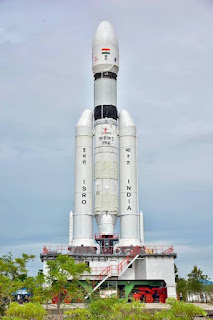Chandrayaan 3 India's Ambitious Lunar Mission Sets Course for Exploration
Introduction:
In a remarkable display of scientific prowess and determination, the Indian Space Research Organisation (ISRO) is all set to embark on its third lunar mission, Chandrayaan 3. Building upon the successes and learnings from its predecessors, Chandrayaan 1 and Chandrayaan 2, this ambitious venture aims to further deepen India's understanding of the Moon and pave the way for future lunar exploration. With its launch scheduled for the near future, Chandrayaan 3 holds the promise of unraveling more mysteries of Earth's celestial neighbor.
Enhanced Design and Objectives:
Chandrayaan 3 represents a significant step forward for India's lunar exploration program, featuring several design enhancements and refined objectives. The spacecraft will consist of an orbiter, a lander, and a rover, much like its predecessor, Chandrayaan 2. However, ISRO has incorporated modifications and improvements based on the lessons learned from the Chandrayaan 2 mission.
The primary objective of Chandrayaan 3 remains the same: to conduct detailed research and analysis of the Moon's surface, mineralogy, and lunar exosphere. By studying the Moon's topography and composition, scientists hope to gain deeper insights into its geological evolution and enhance our understanding of planetary formation processes.
Key Technological Advancements:
Chandrayaan 3 will leverage the technological advancements made during previous missions, showcasing India's growing expertise in space exploration. The lander and rover are expected to be equipped with advanced instruments, including high-resolution cameras, spectrometers, and drills, to enable detailed observations and data collection.
One notable improvement in Chandrayaan 3 is the focus on enhancing the reliability of the lander's communication system. The mission aims to address the challenges faced during the landing phase of Chandrayaan 2, which encountered a loss of communication just moments before reaching the lunar surface. By implementing robust communication measures, ISRO aims to ensure seamless transmission of critical data throughout the mission.
Collaborative Efforts:
ISRO recognizes the importance of international collaboration in advancing lunar research. Chandrayaan 3 will continue to foster partnerships with international space agencies, inviting contributions from other nations in terms of scientific payloads and technological expertise. Collaborative efforts will not only broaden the scope of research but also promote knowledge-sharing and mutually beneficial cooperation among nations.
Impacts and Future Prospects:
The successful launch and completion of Chandrayaan 3 will undoubtedly reinforce India's position as a leading player in the global space exploration arena. The mission's findings and data will not only contribute to scientific knowledge but also serve as a valuable resource for future lunar missions, including potential manned missions.
Moreover, the advancements made in Chandrayaan 3 will have positive implications for India's space sector, fostering technological innovation, research and development, and inspiring the next generation of scientists and engineers.
Conclusion:
As the launch of Chandrayaan 3 draws near, excitement and anticipation build for India's latest lunar mission. With enhanced design, refined objectives, and technological advancements, Chandrayaan 3 holds the potential to unlock new discoveries about the Moon, bringing us closer to unraveling the mysteries of our celestial neighbor. By continuing to push the boundaries of space exploration, India reaffirms its commitment to scientific progress and reinforces its place among the frontrunners of the global space community.





Post a Comment